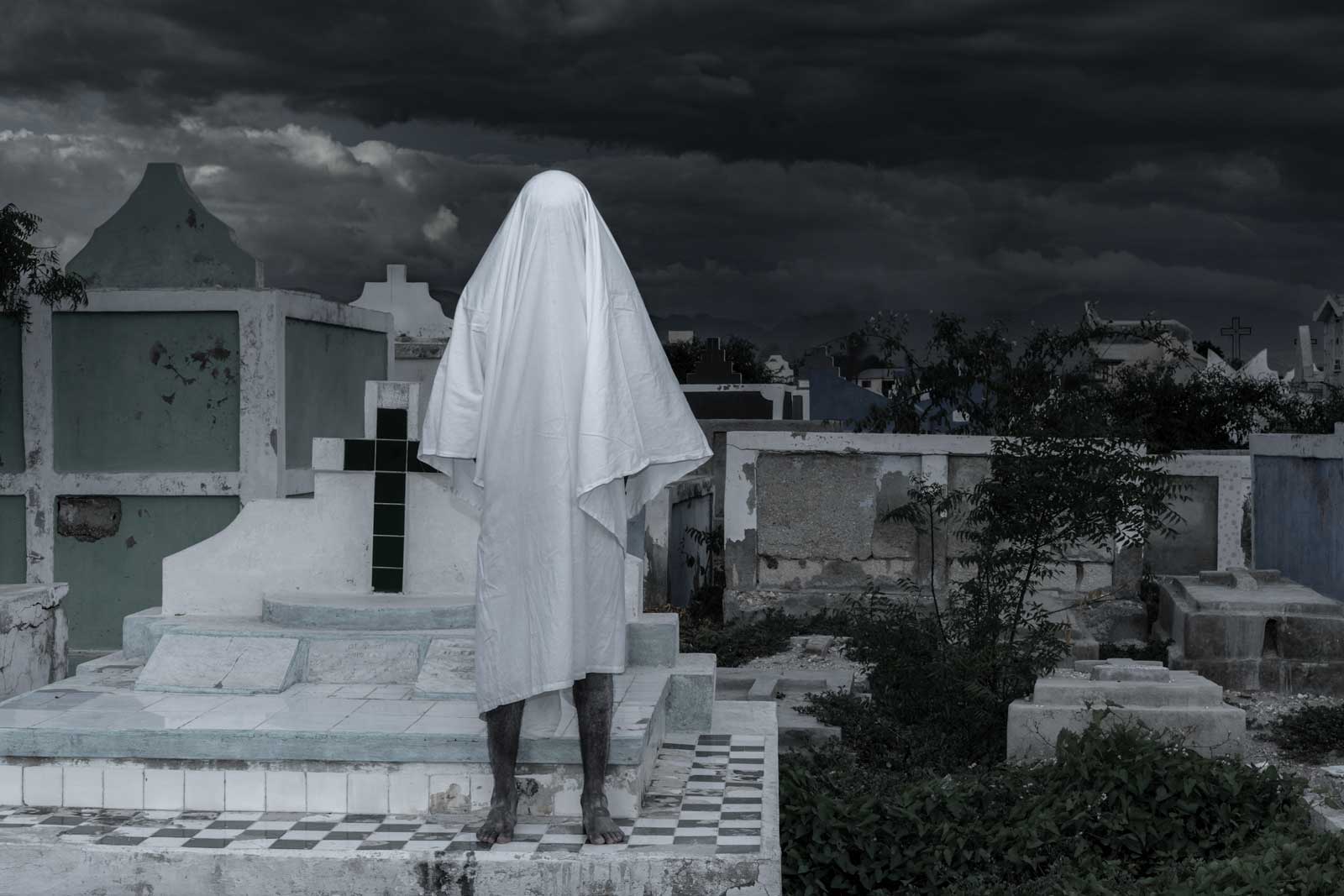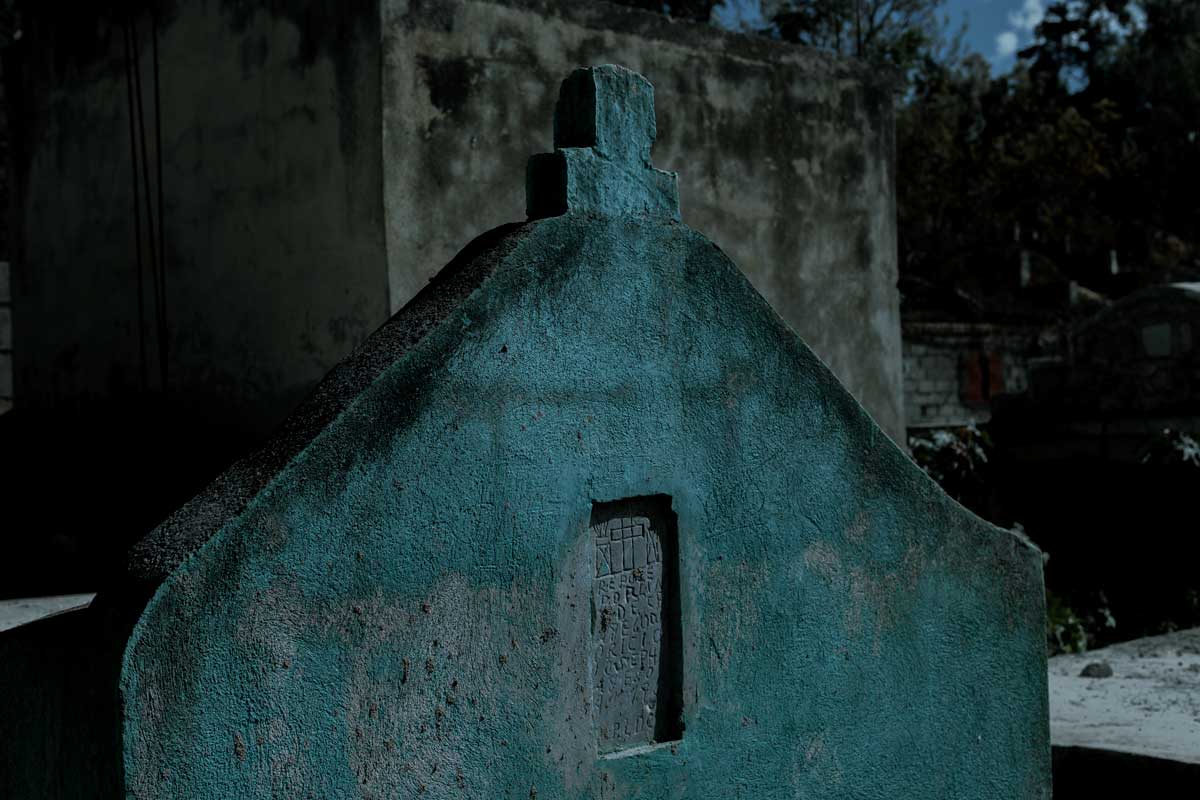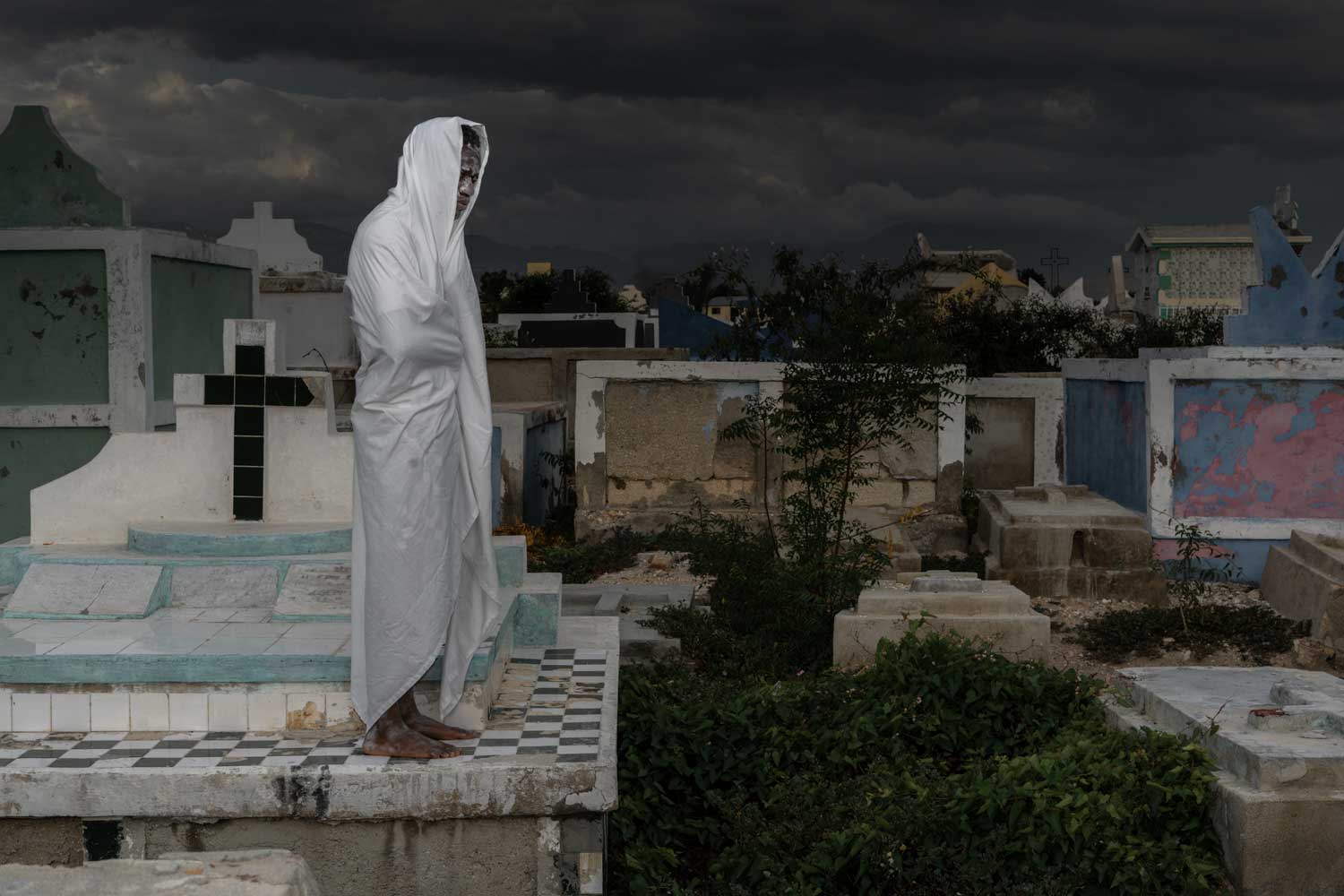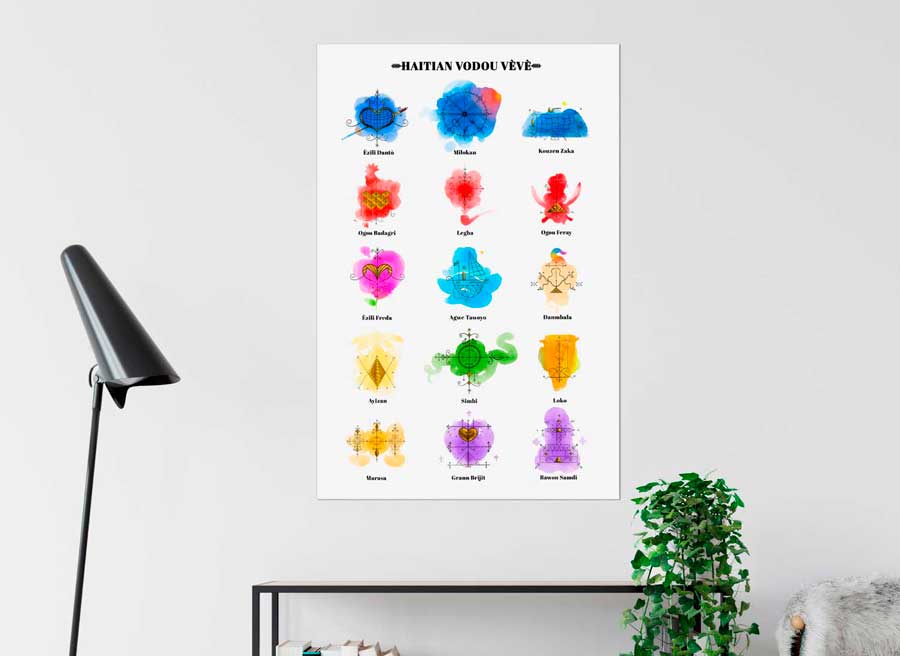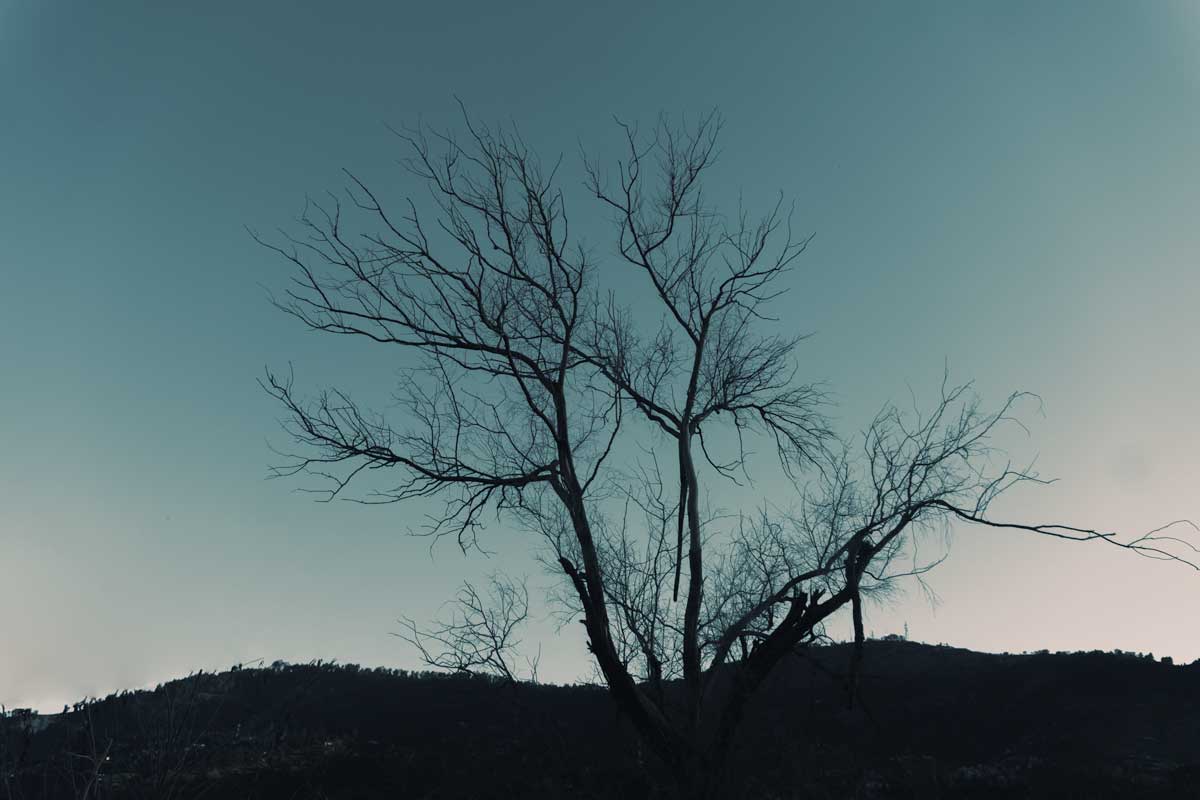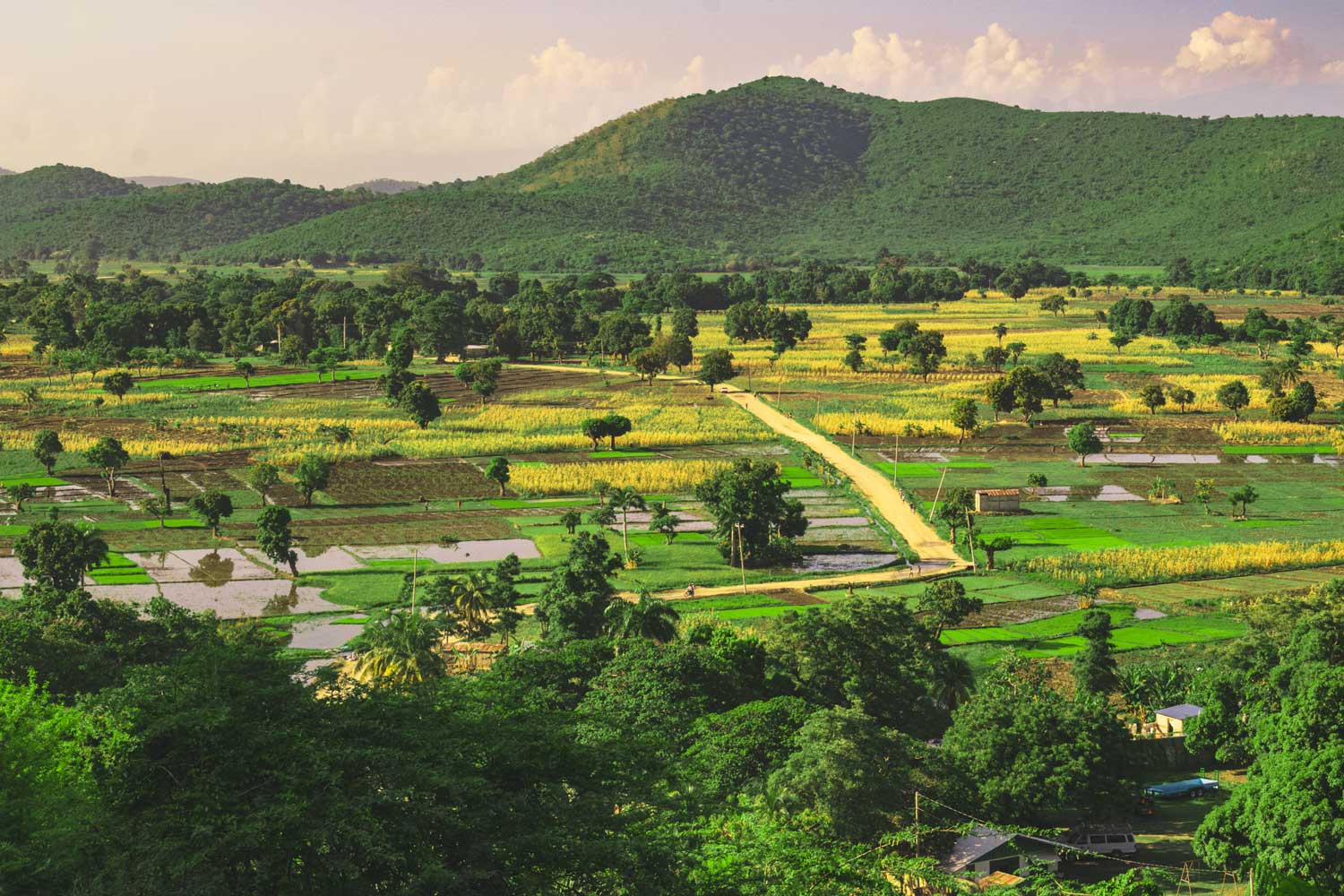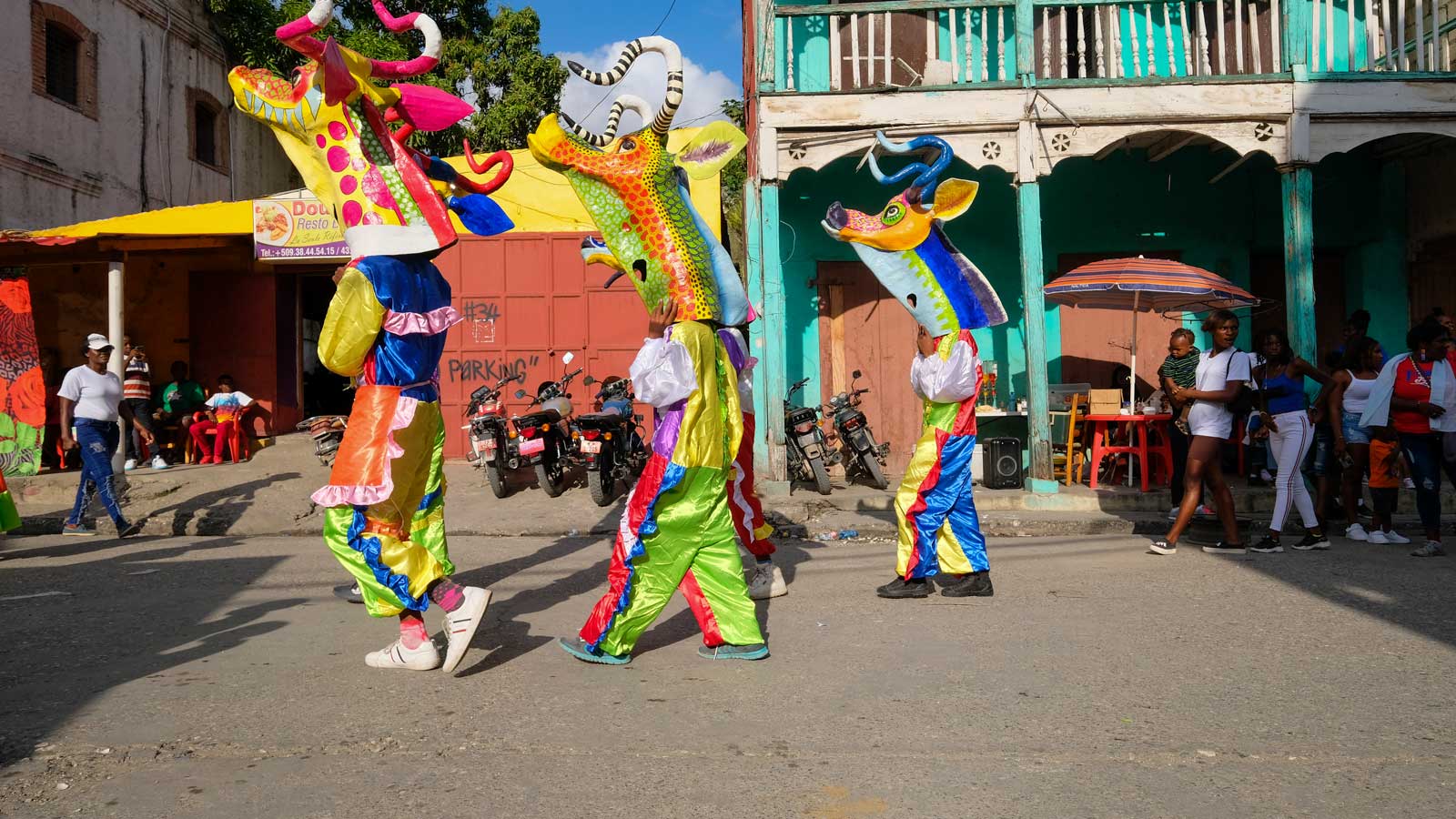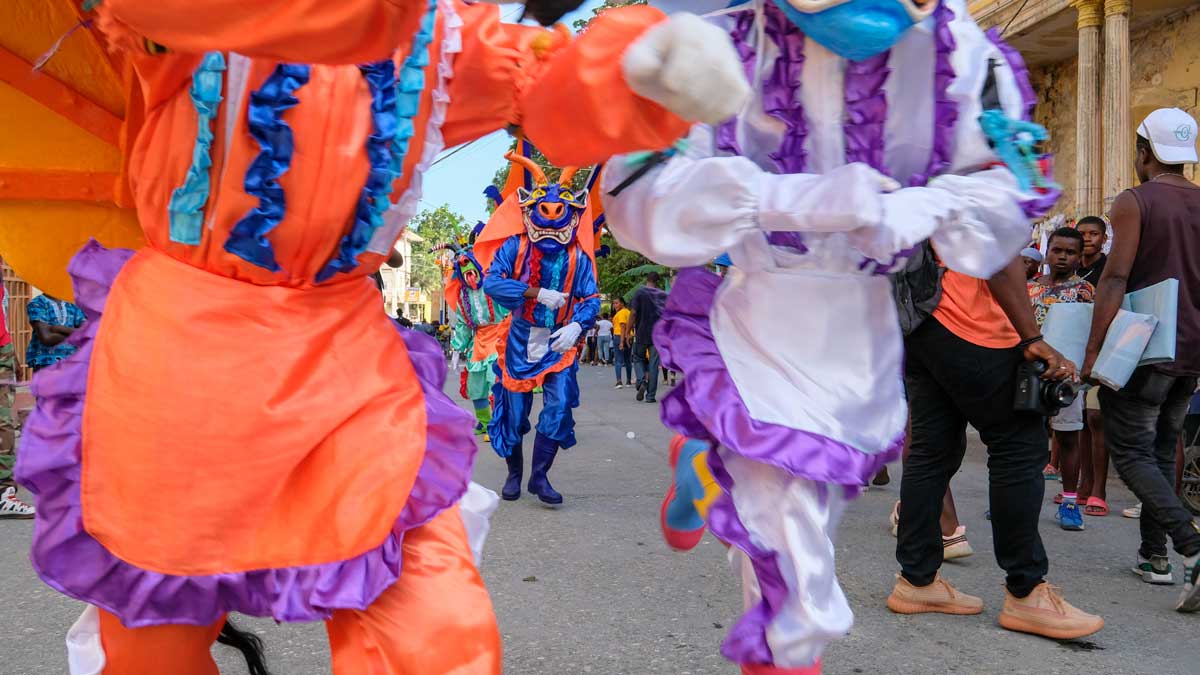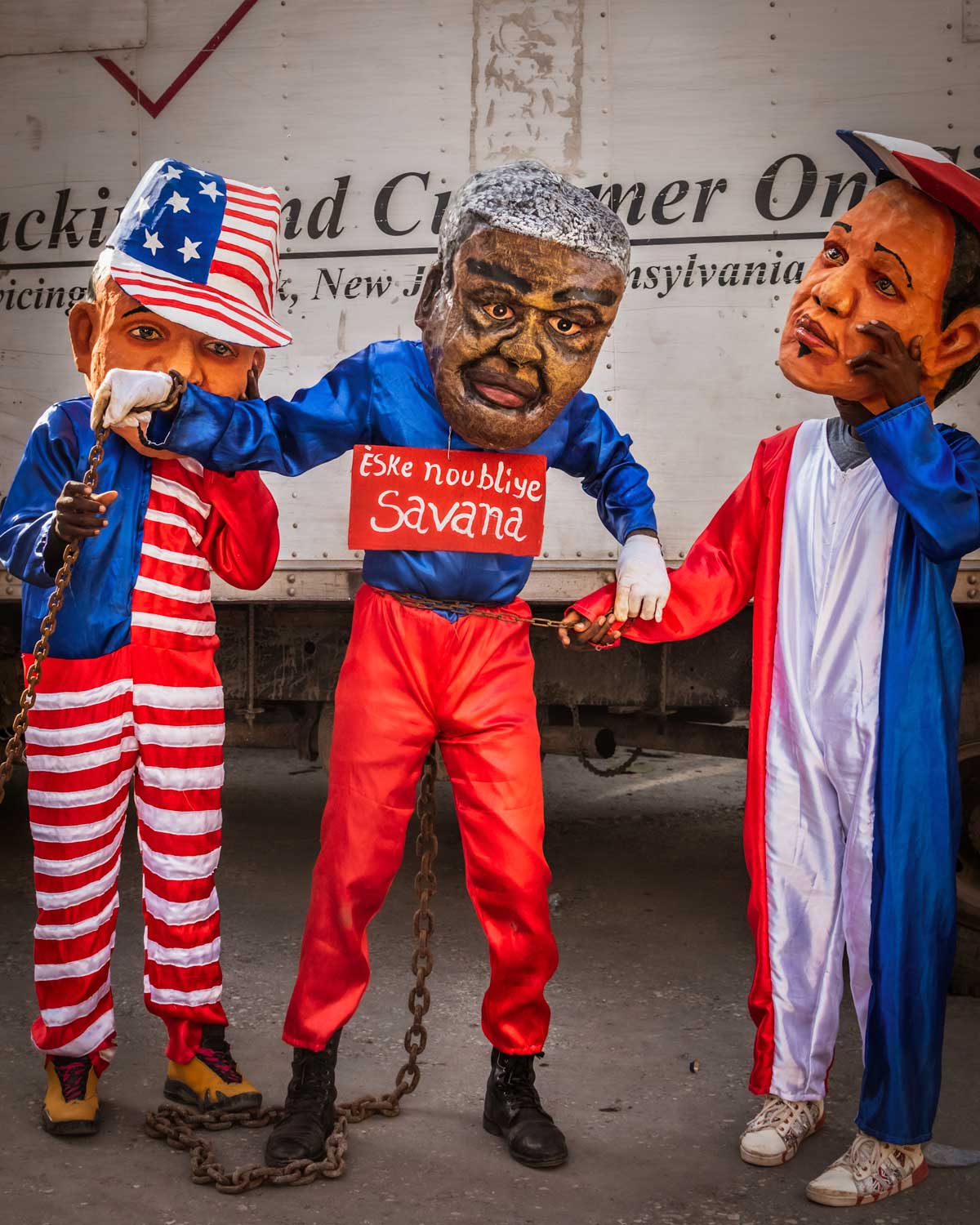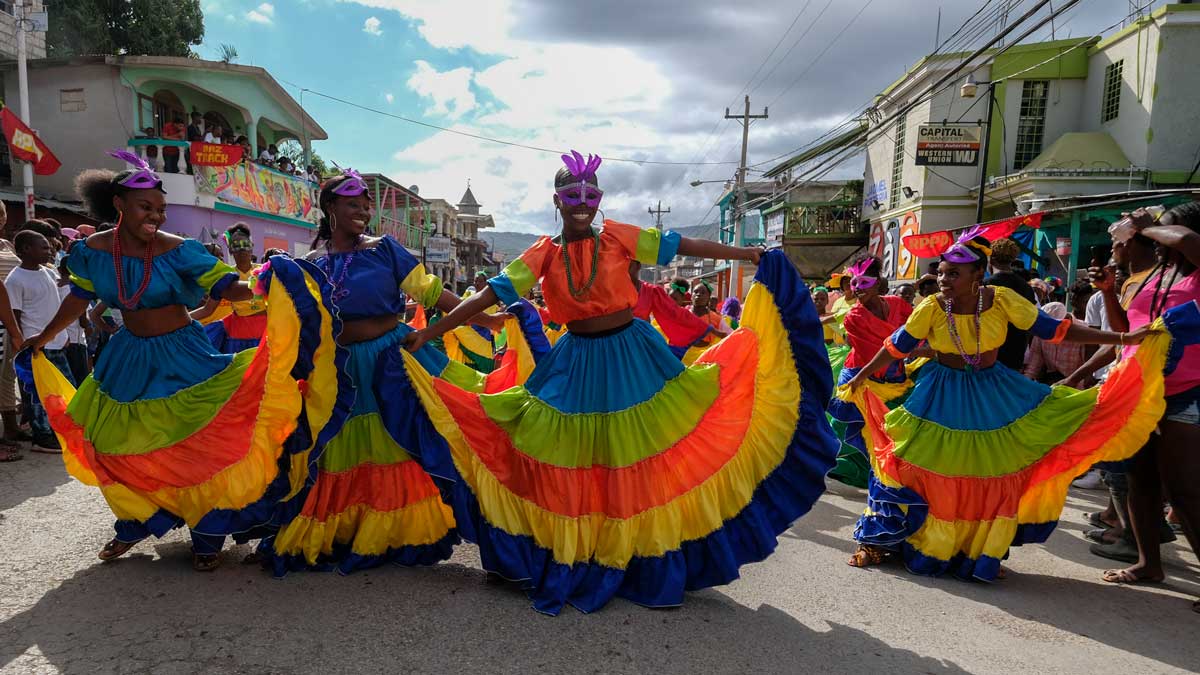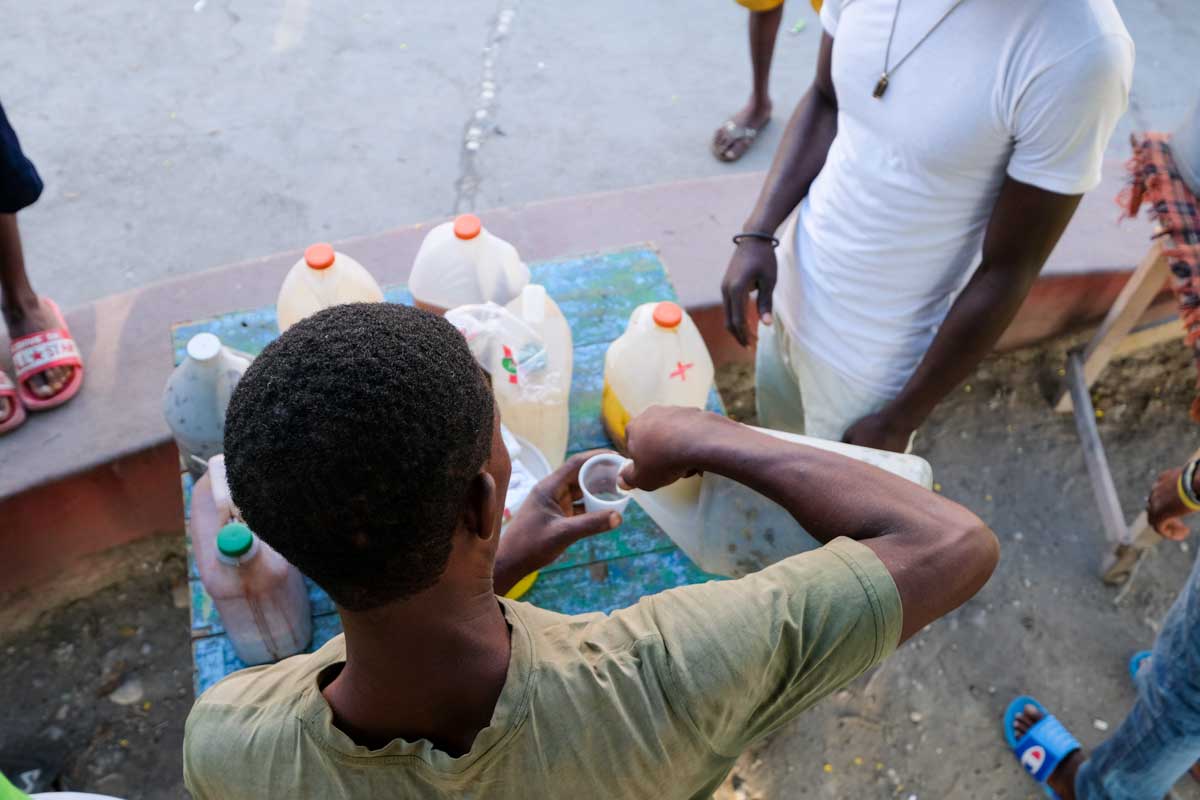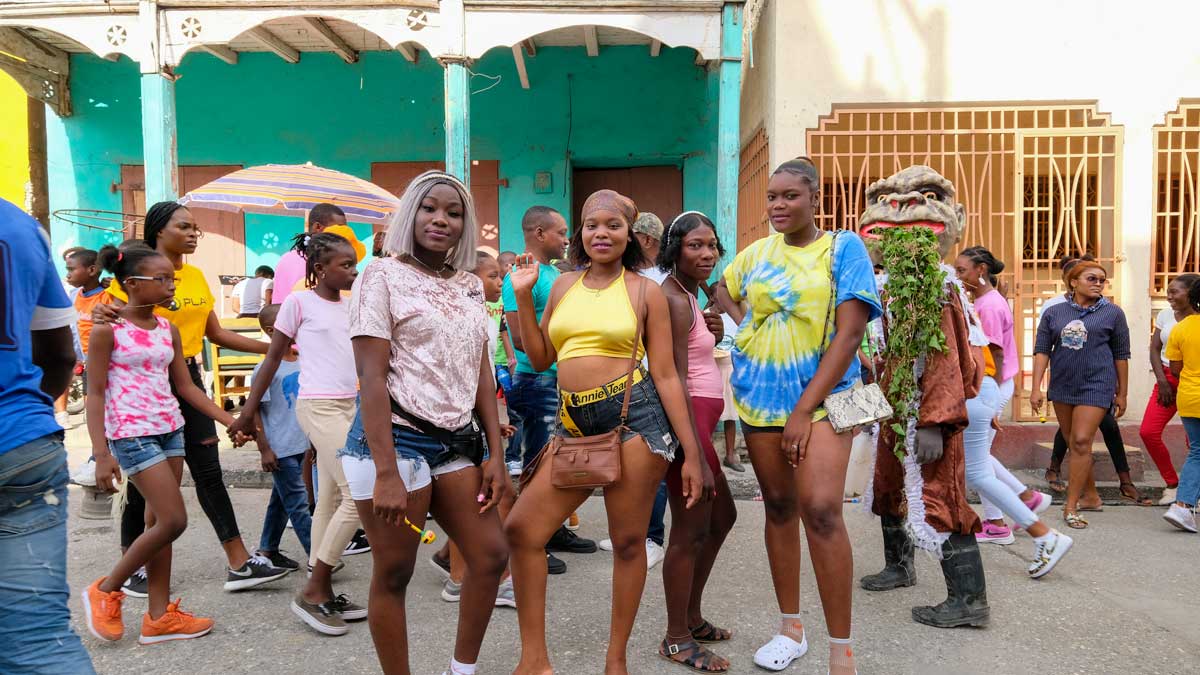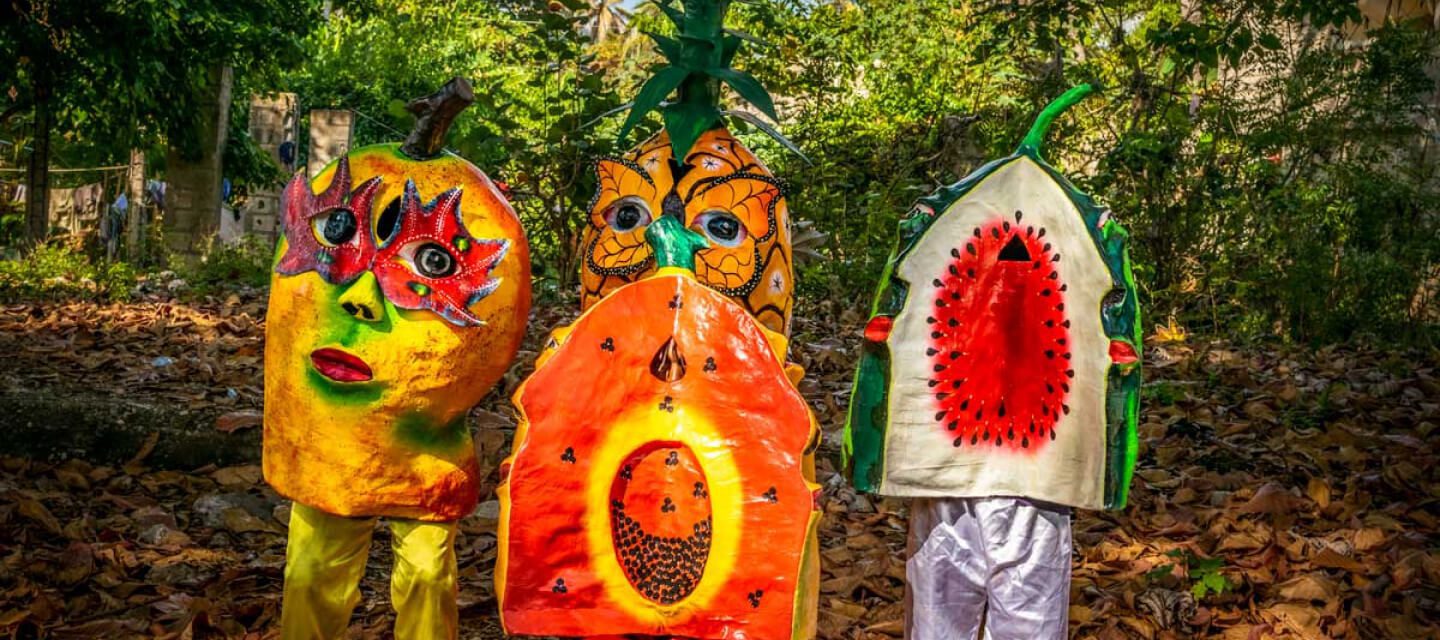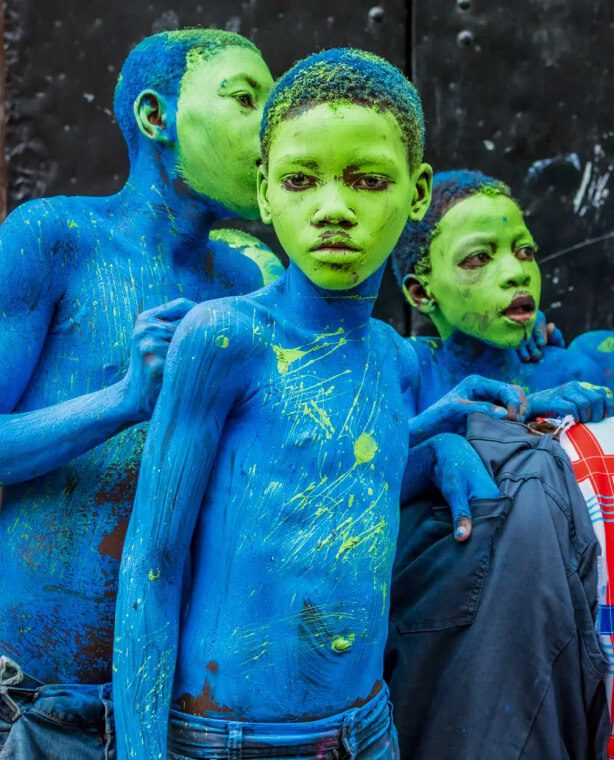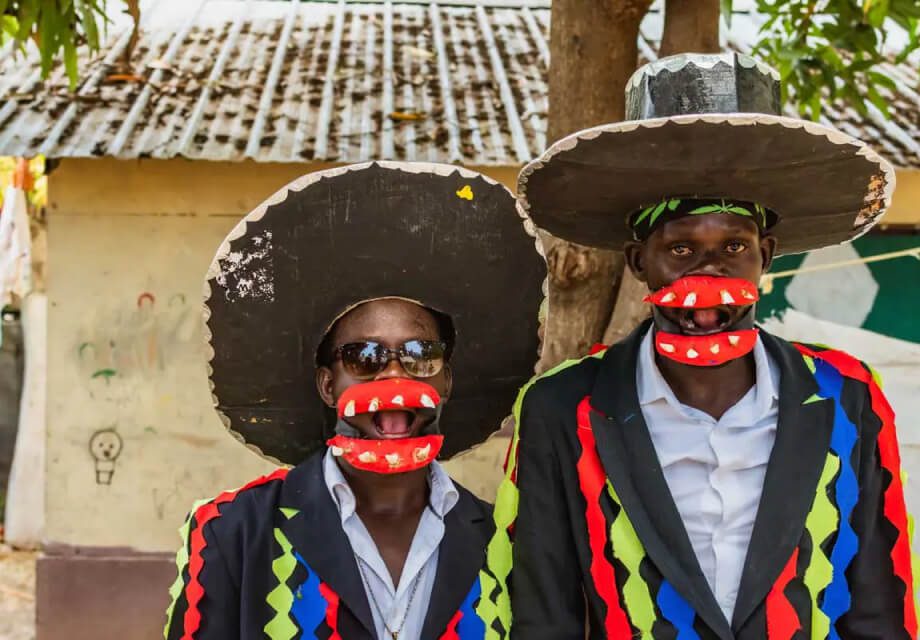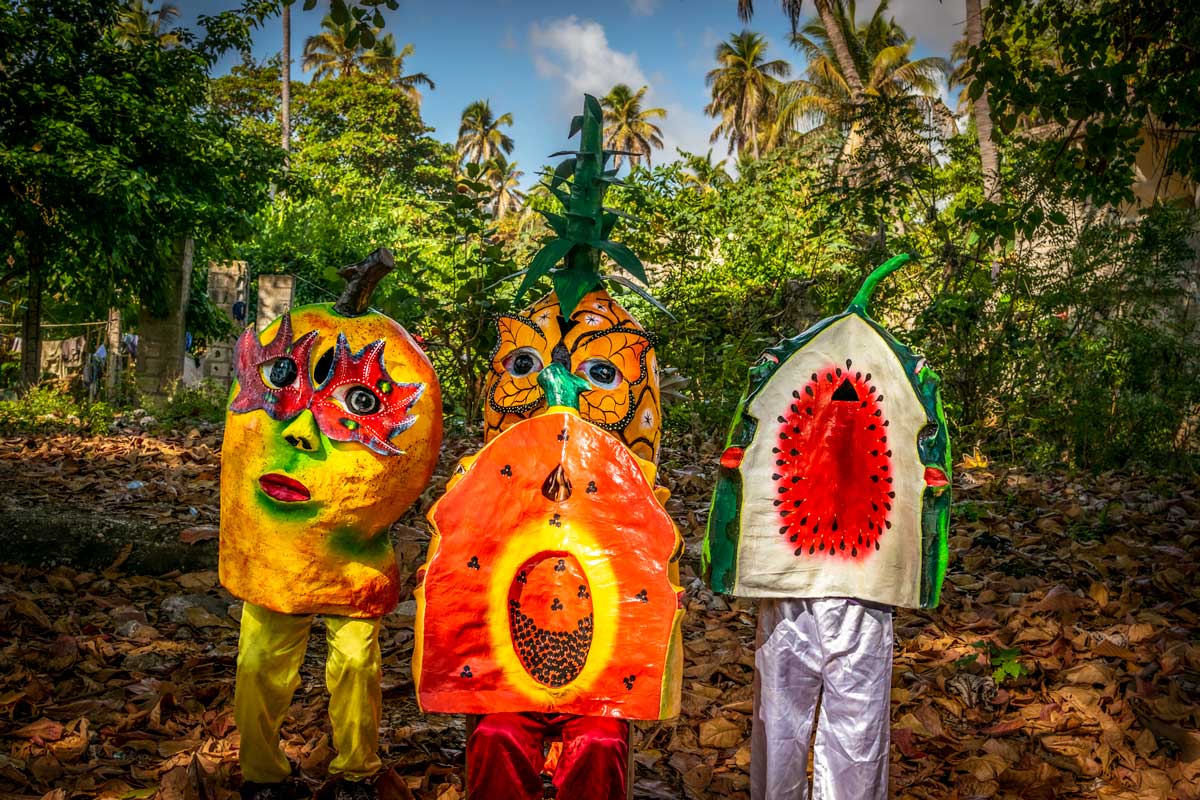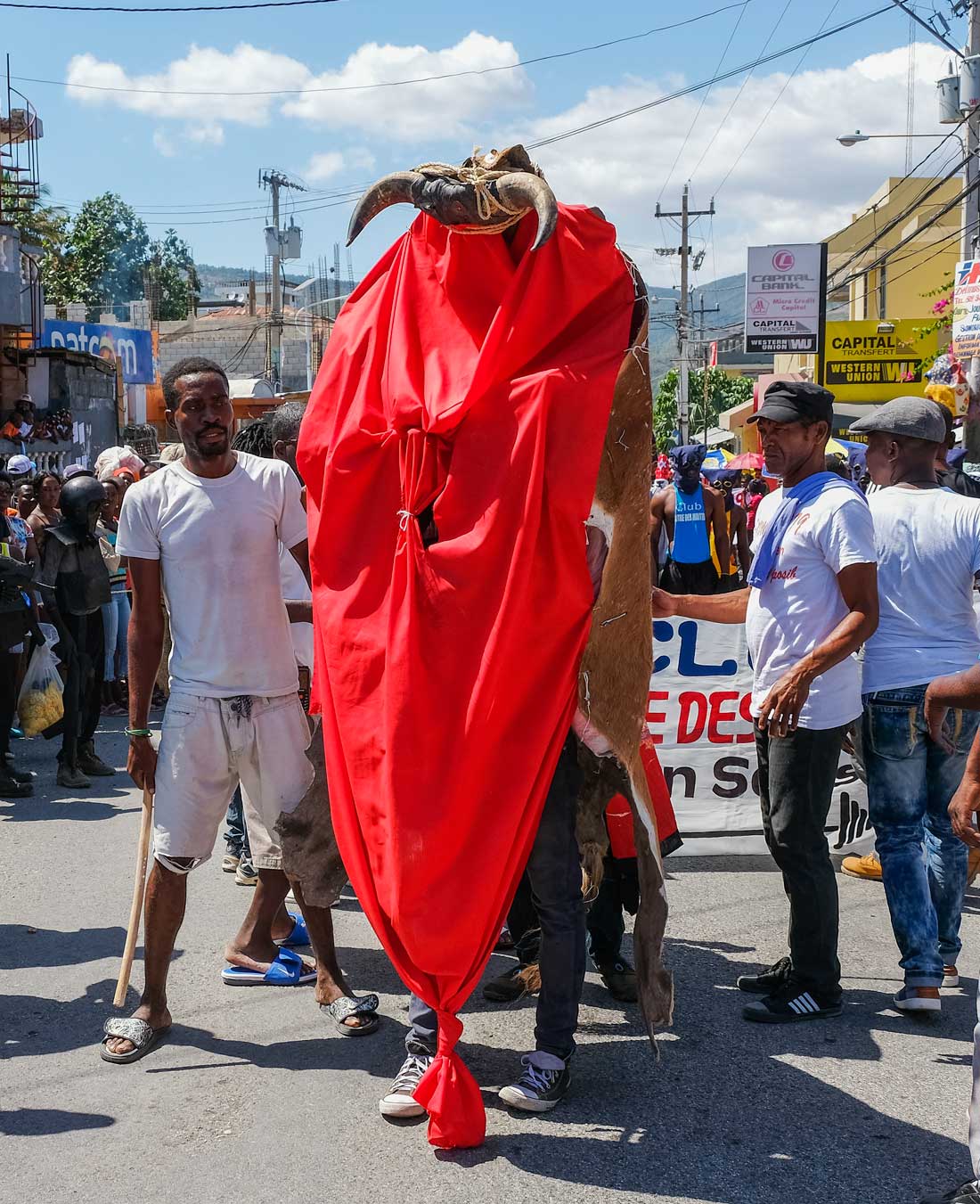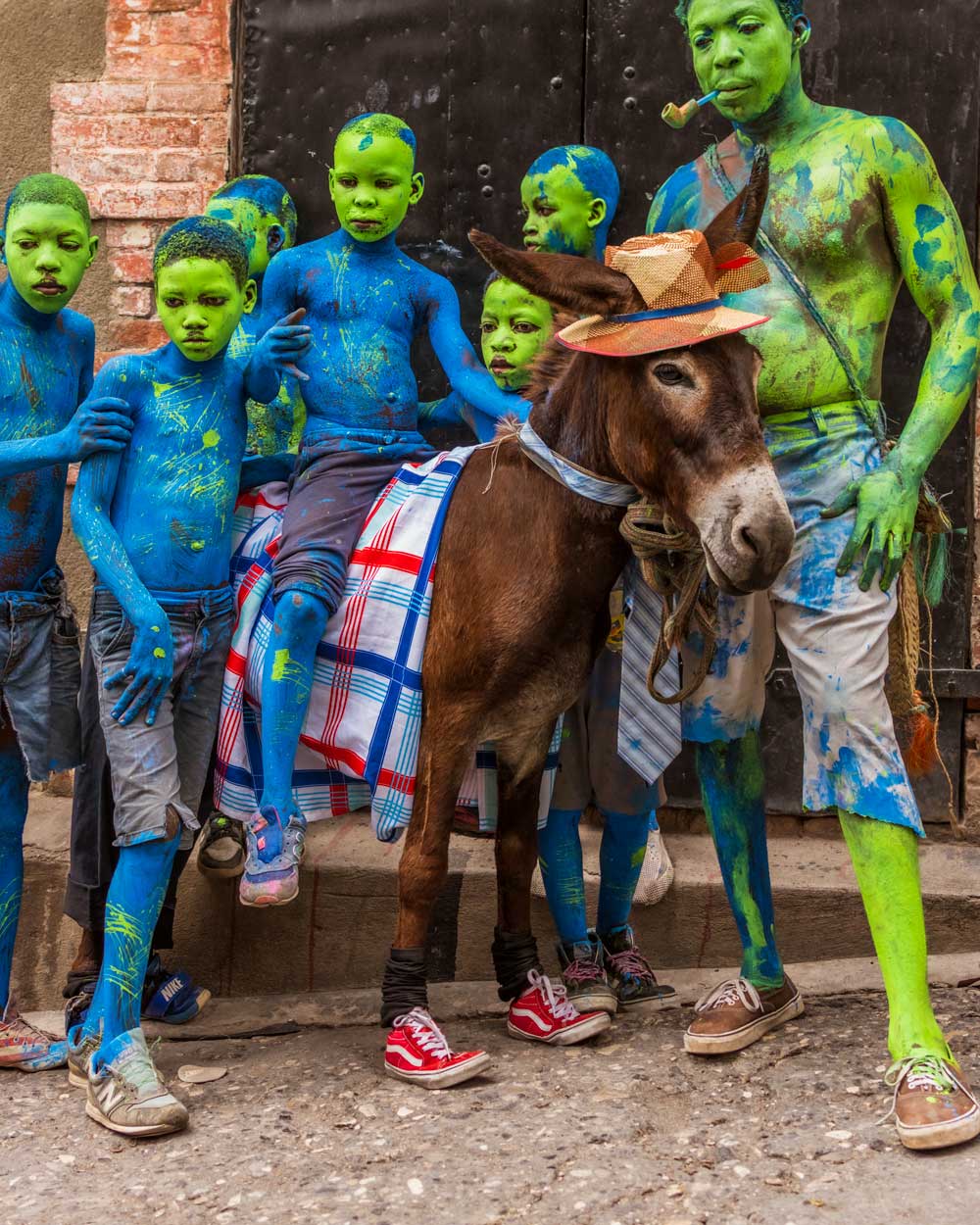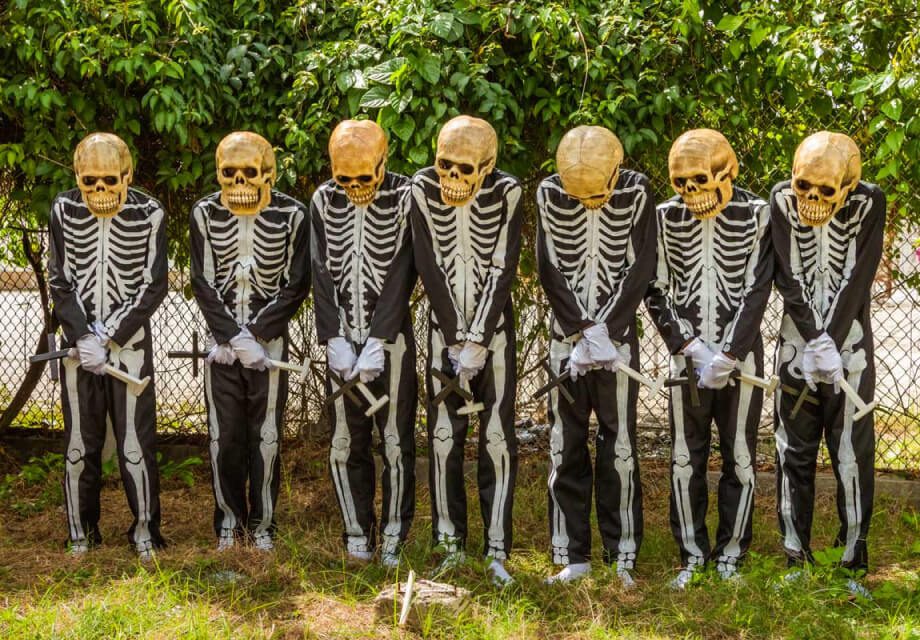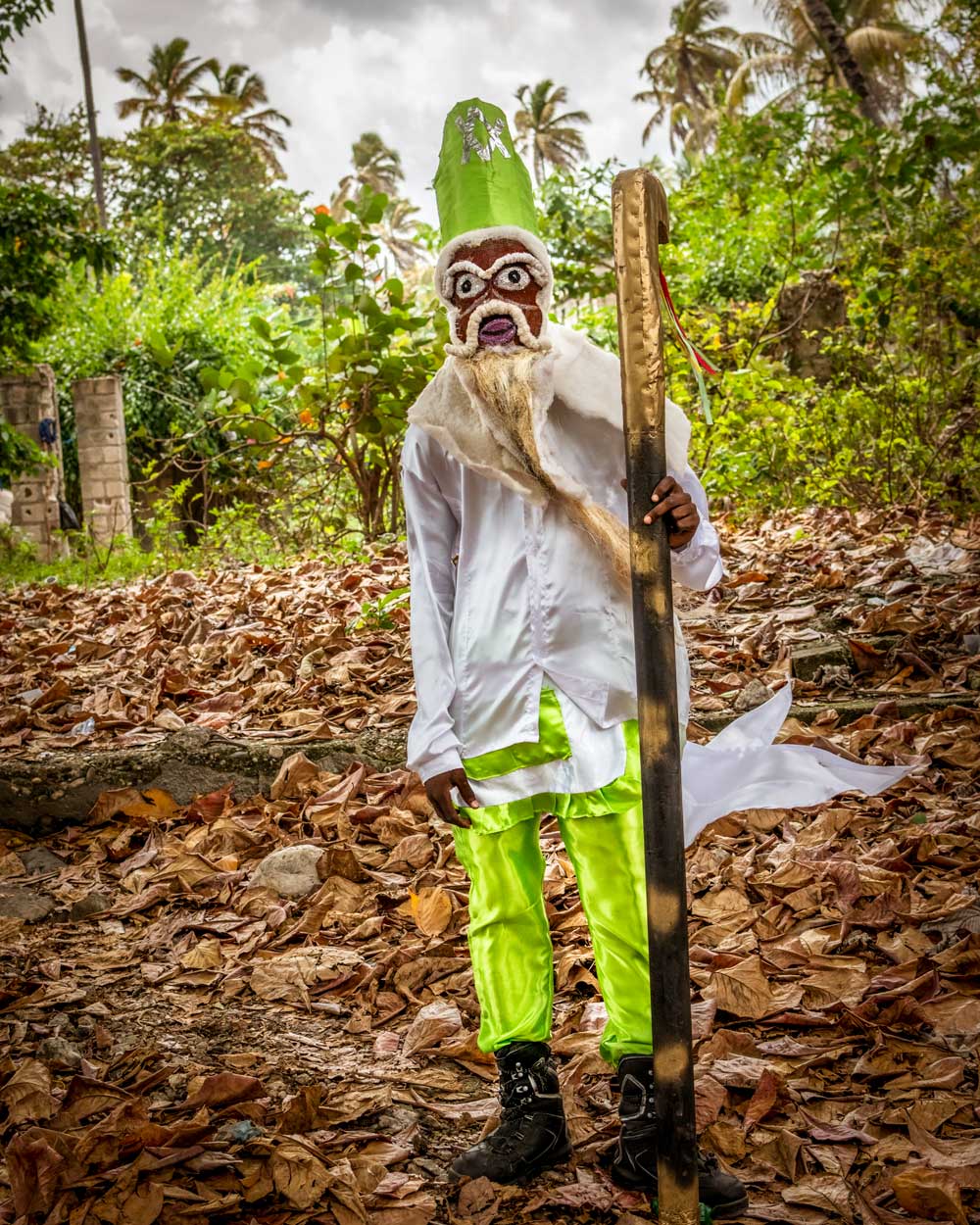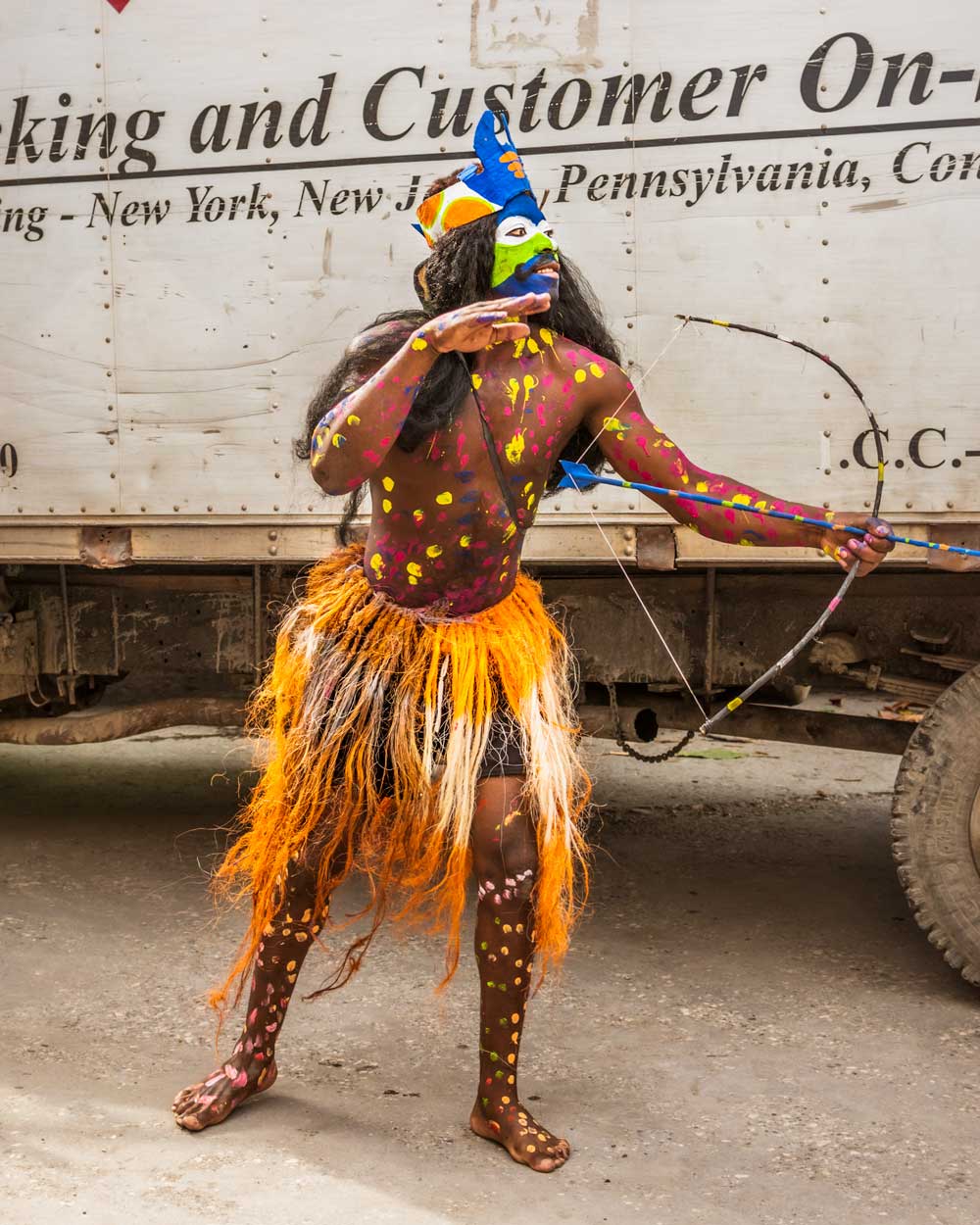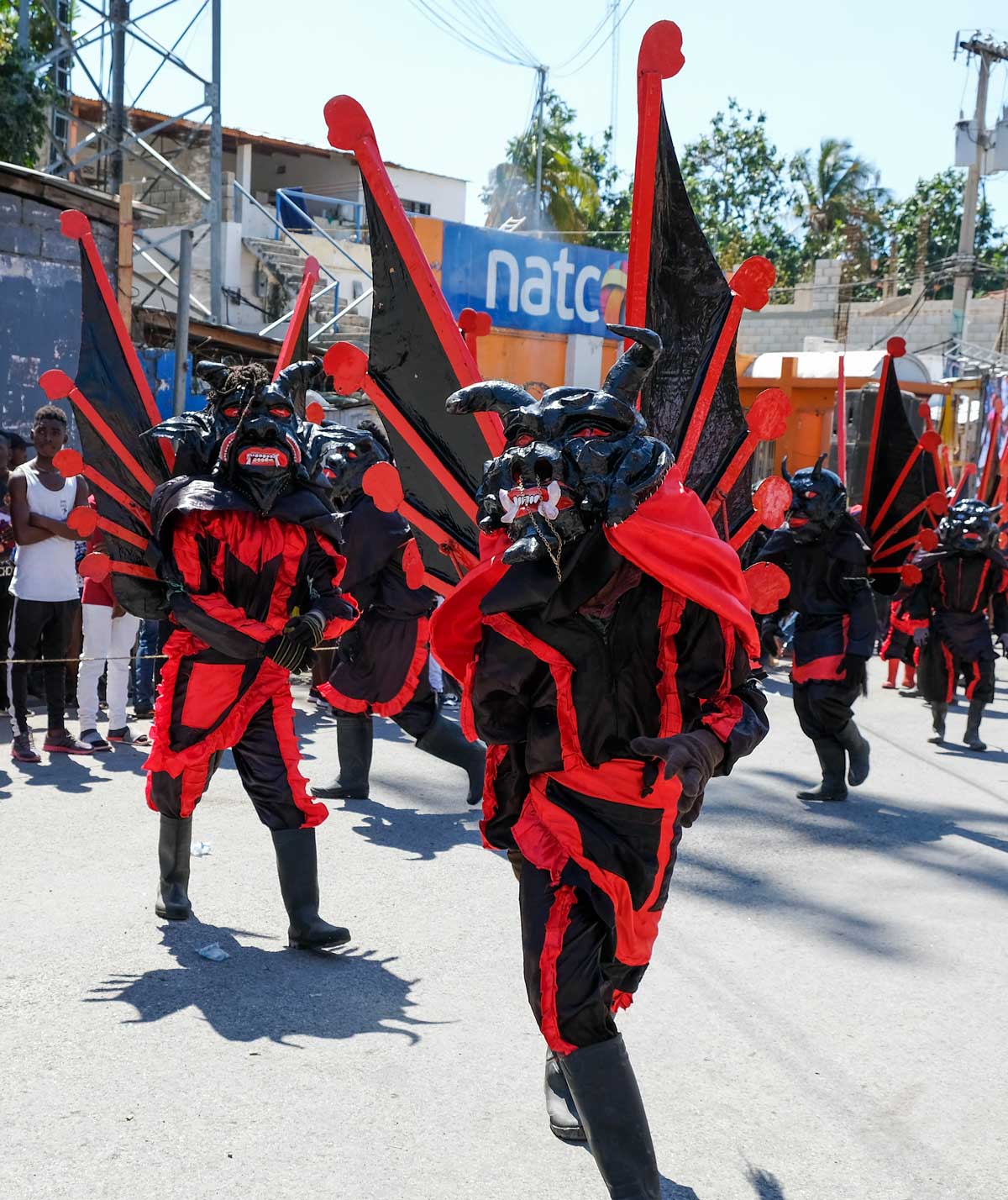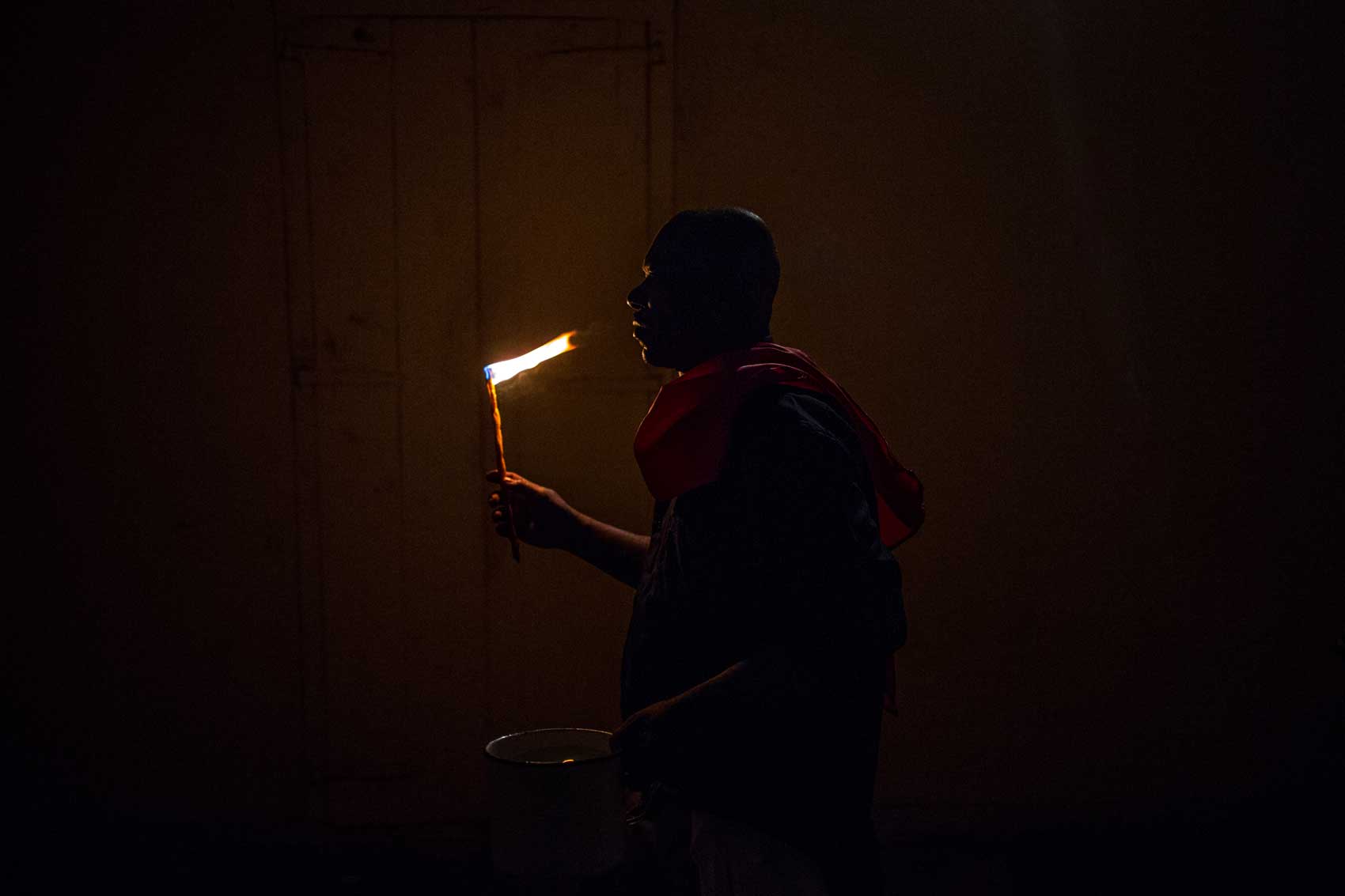
Photo: Pierre Michel Jean
Between Sea and Shadow: The Lore of Haitian Mermaids & Lougawou
Journey through Haitian folklore, where the mysterious lougawou and mesmerizing Haitian mermaids bring myths to life
“Krik…! Tim tim…!”
When you hear this captivating call from a Haitian storyteller, prepare to be transported into an incredible world, alive with imagination and steeped in legends. The richness and depth of Haitian tales will surely astonish you. Traditionally narrated around a tree at dusk, in the cozy backdrop of a yard, these stories breathe life into extraordinary characters right before our eyes.
Haitian folklore, an oral tradition at heart, acts as a cultural bridge between generations. It’s a communal experience where the young and old gather to revisit beloved stories, blending magical creatures, historical figures, animals, and mythical places. Through these tales, elders pass down wisdom and life lessons, embedding characters from these narratives into the Haitian collective consciousness as living myths.
So, stay glued to your screen as we dive into the universe of Haitian folklore legends, introducing you to beings like the enchanting Haitian mermaid, the mysterious Maître Minuit, or the legendary lougawou. Be prepared for a journey through a culture where the boundary between the real and the imaginary is as delicate as a veil.
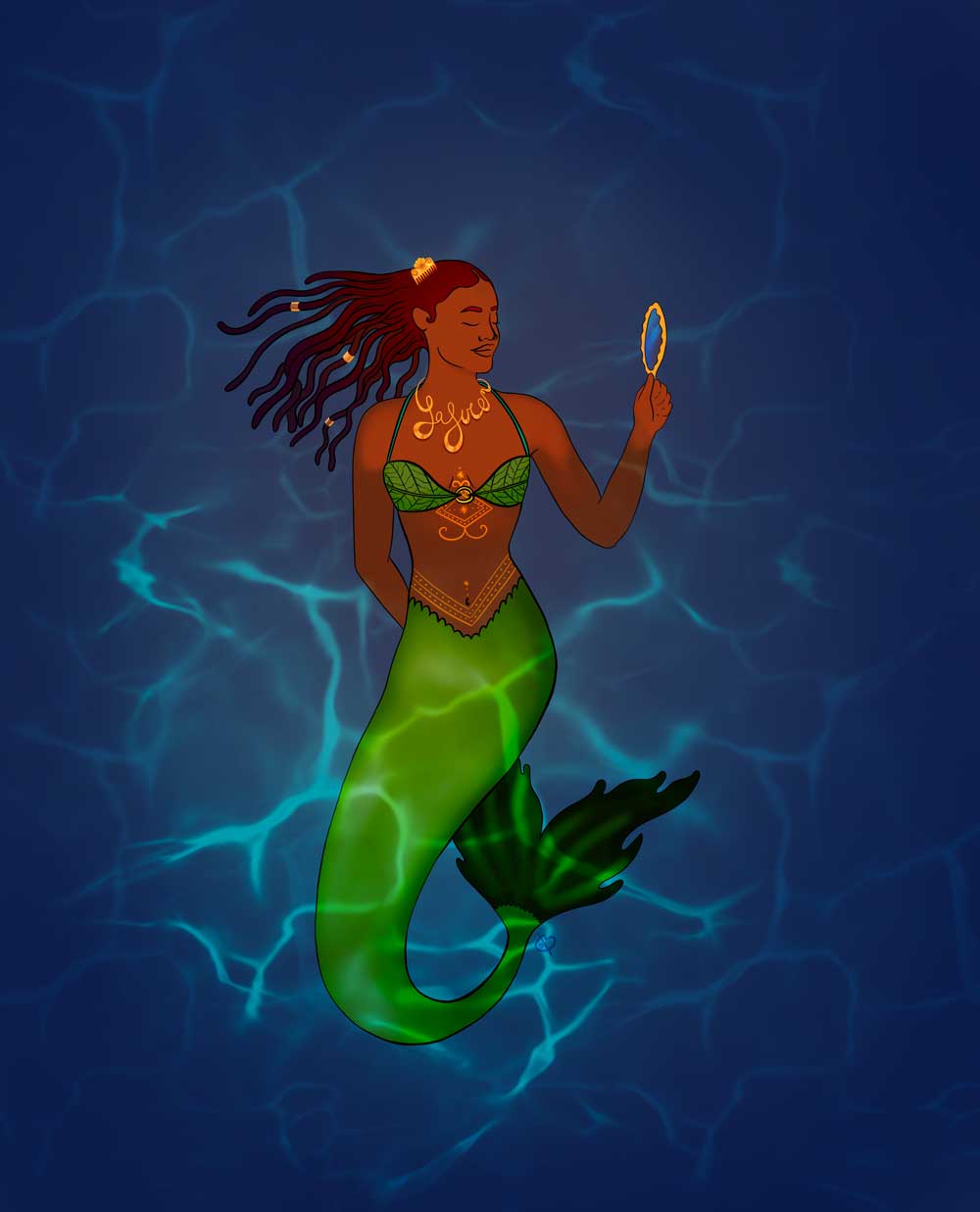
Illustration: Corine Bond
1. Unveiling the Mystery of the Haitian Mermaid
Meet the mesmerizing La Sirene or Haitian Mermaid, a captivating blend of deity and legend. Revered in Vodou as a potent spirit, she rules the ocean’s depths with her consort, Agwe. Keeper of the sea’s treasures, her allure lies in the mystery and power she wields, making her an object of reverence and caution.
A visit to the island’s shores might reveal why locals leave their gold at home; to wear it is to offer it directly to the Haitian mermaid, who’s known for not needing an invitation to claim what catches her eye.
Few have glimpsed this majestic being, with her flowing hair, by the water’s edge. Her song, a melody that binds the soul, has lured countless into her watery realm, only to return them enriched with the sea’s bounties as they age.
For those daring enough, capturing her golden comb during her seaside repose might earn you a visit in your dreams, where she’s ready to bargain its return for a treasure.
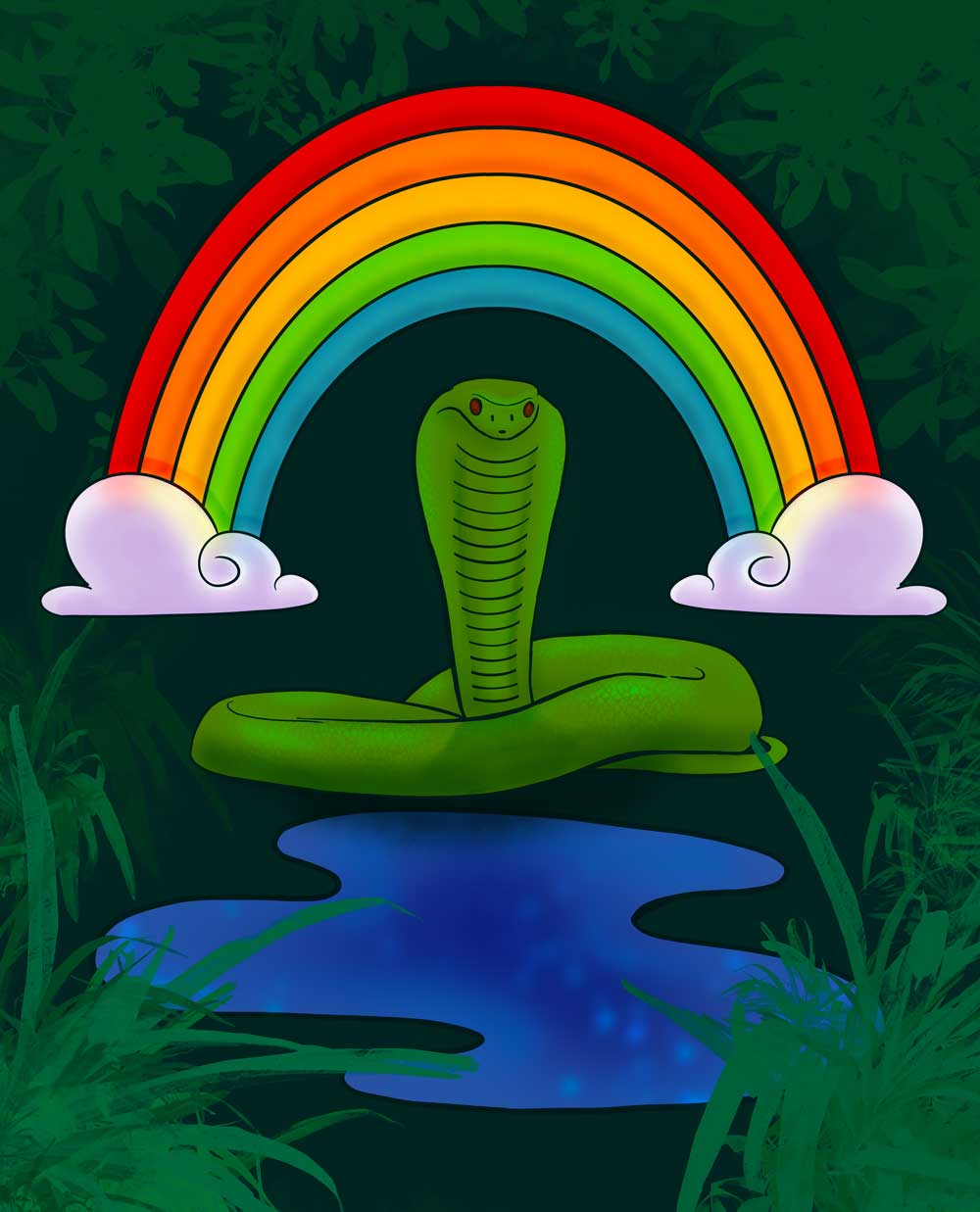
Illustration: Corine Bond
2. A Haitian Rainbow Is More Than Meets the Eye
When you think of a rainbow, you probably picture the beautiful arc of colors in the sky, a simple yet mesmerizing optical phenomenon. Yet, dive into Haitian folklore, and you’ll discover that a rainbow is not just a rainbow. Here, in Haiti a rainbow is actually a colossal serpent, quenching its thirst in the sea after a rainfall.
In Vodou tradition, the rainbow is closely intertwined with the goddess Ayida and her consort, Dambala, the divine pair known for their roles in creation and wisdom. The elders tell tales of how capturing the rainbow’s ‘bonnet’—during a moment of distraction as it drinks from the sea—can make you a fortune, similar to the enchanting narratives about the Haitian Mermaid.
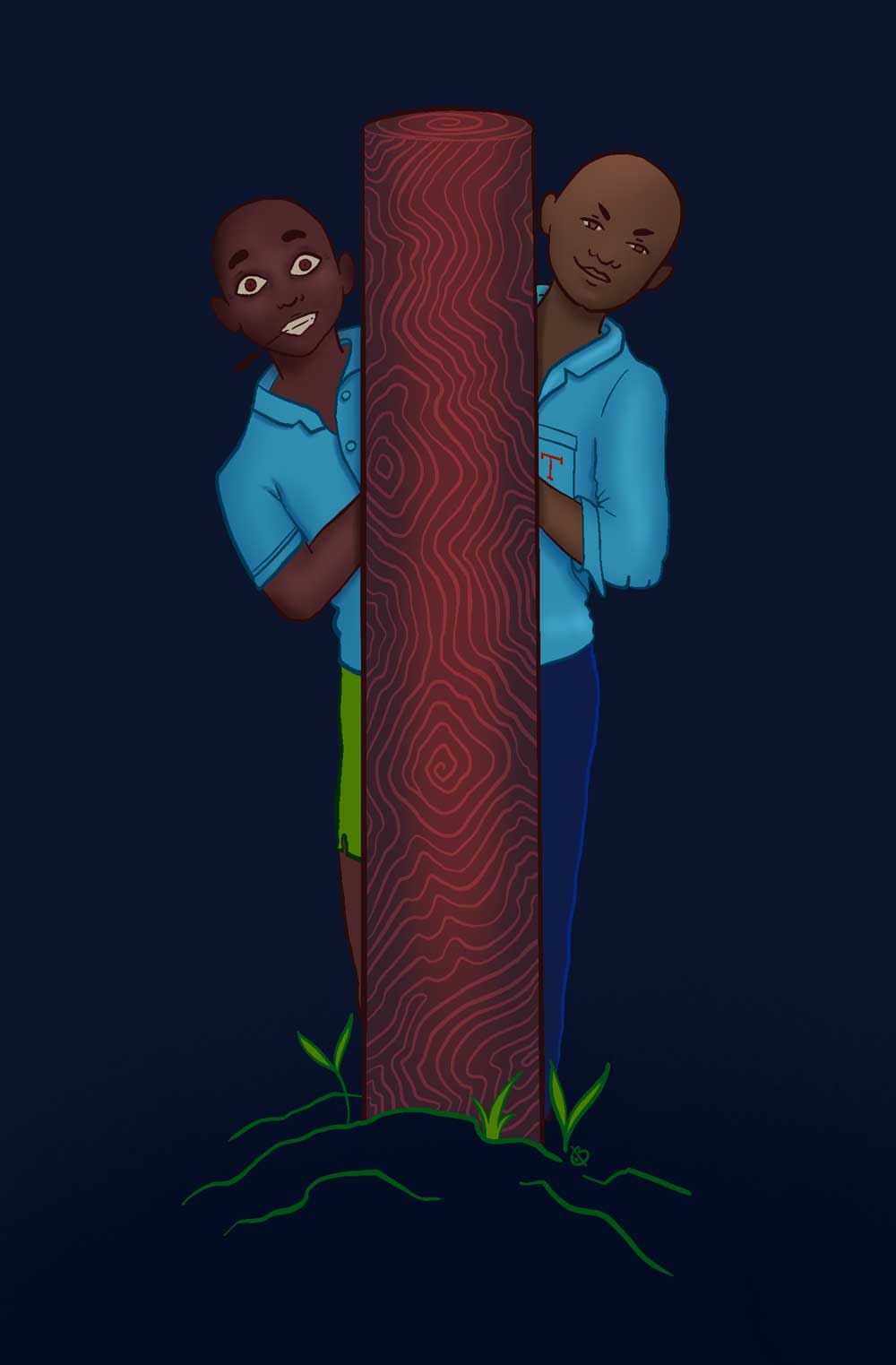
Illustration: Corine Bond
3. Bouki and Ti Malice, The Dynamic Duo of Haitian Folklore
If you pride yourself on being a bit of a trickster, wait until you hear about Bouki and Ti Malice. These two are the embodiment of “thick as thieves,” proving that no evening of tales under the Haitian stars is complete without their shenanigans.
Ti Malice, the name gives it away, doesn’t it? He’s the mastermind of mischief, always a step ahead with a prank up his sleeve. Bouki, his loyal companion, often finds himself on the bumbling end of these escapades, earning the title of the loveable fool. In Haiti Creole, being called a Bouki is akin to being dubbed the class clown – it’s all in good fun, but you might want to check for whoopee cushions before you sit down.
Their stories aren’t just for laughs; they’re stitched into the fabric of Haitian education. From classroom lessons to bedtime stories, the adventures of Bouki and Ti Malice teach valuable lessons wrapped in humor and wit, making them unforgettable characters in Haitian folklore.
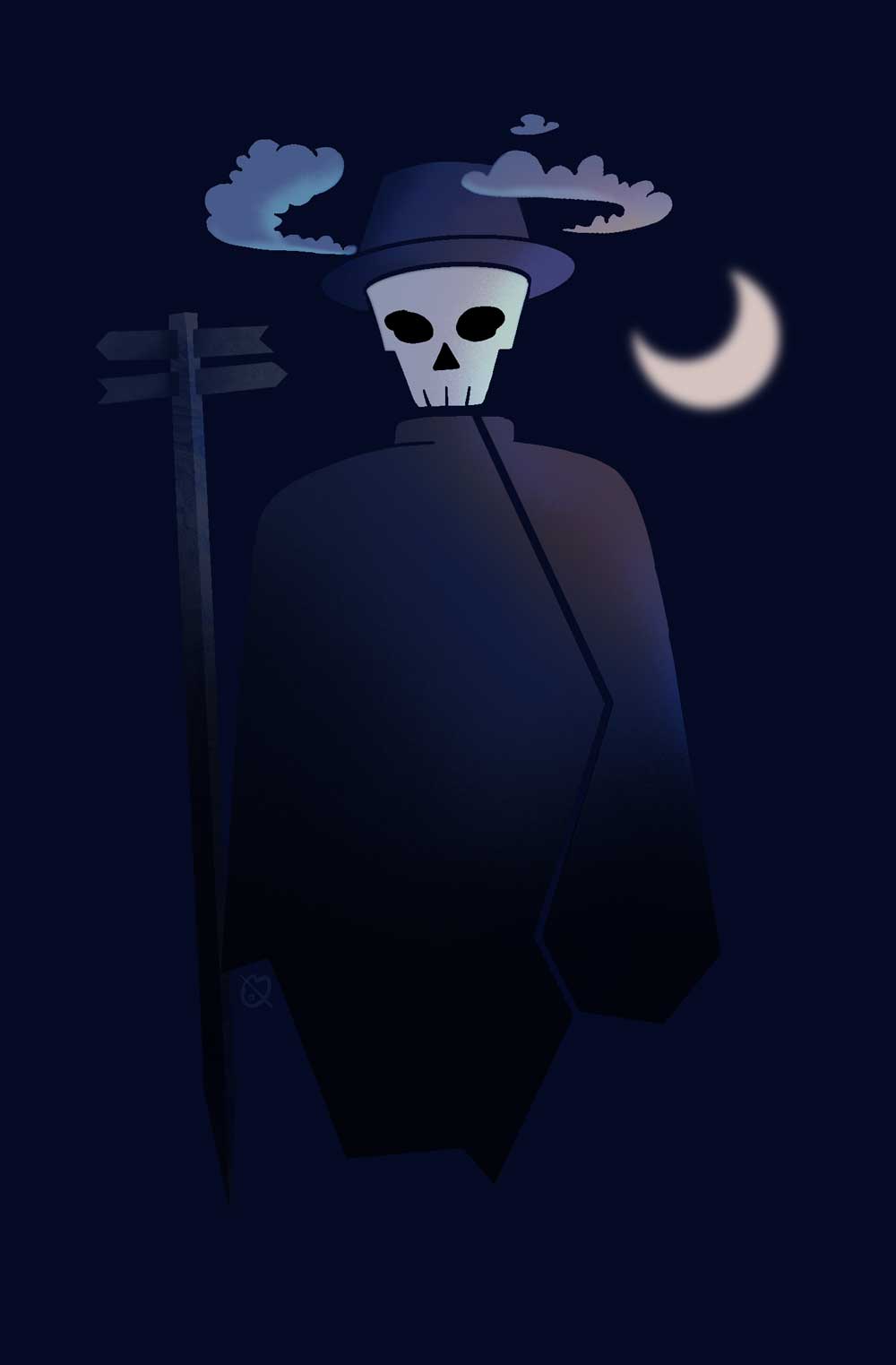
Illustration: Corine Bond
4. Mèt Minwi: The Giant of Haitian Nights
As night falls, tread carefully, for Mèt Minwi (the Master of Midnight) watches over the crossroads. Haitian folklore is a tapestry woven with magic and chilling tales, among which Mèt Minwi stands tall—literally. This enigmatic figure, so tall his head is lost in the clouds, has been the subject of whispers among those who claim to have seen him blocking paths in the dead of night.
A guardian or a specter, his origins are as mysterious as his motives. Yet, the stories agree on one thing: Mèt Minwi’s towering presence is enough to deter the most daring from their nocturnal wanderings. How he came to be a fixture of Haitian folklore’s horror stories is anyone’s guess, but his legend keeps the adventurous well away from crossroads after dark.
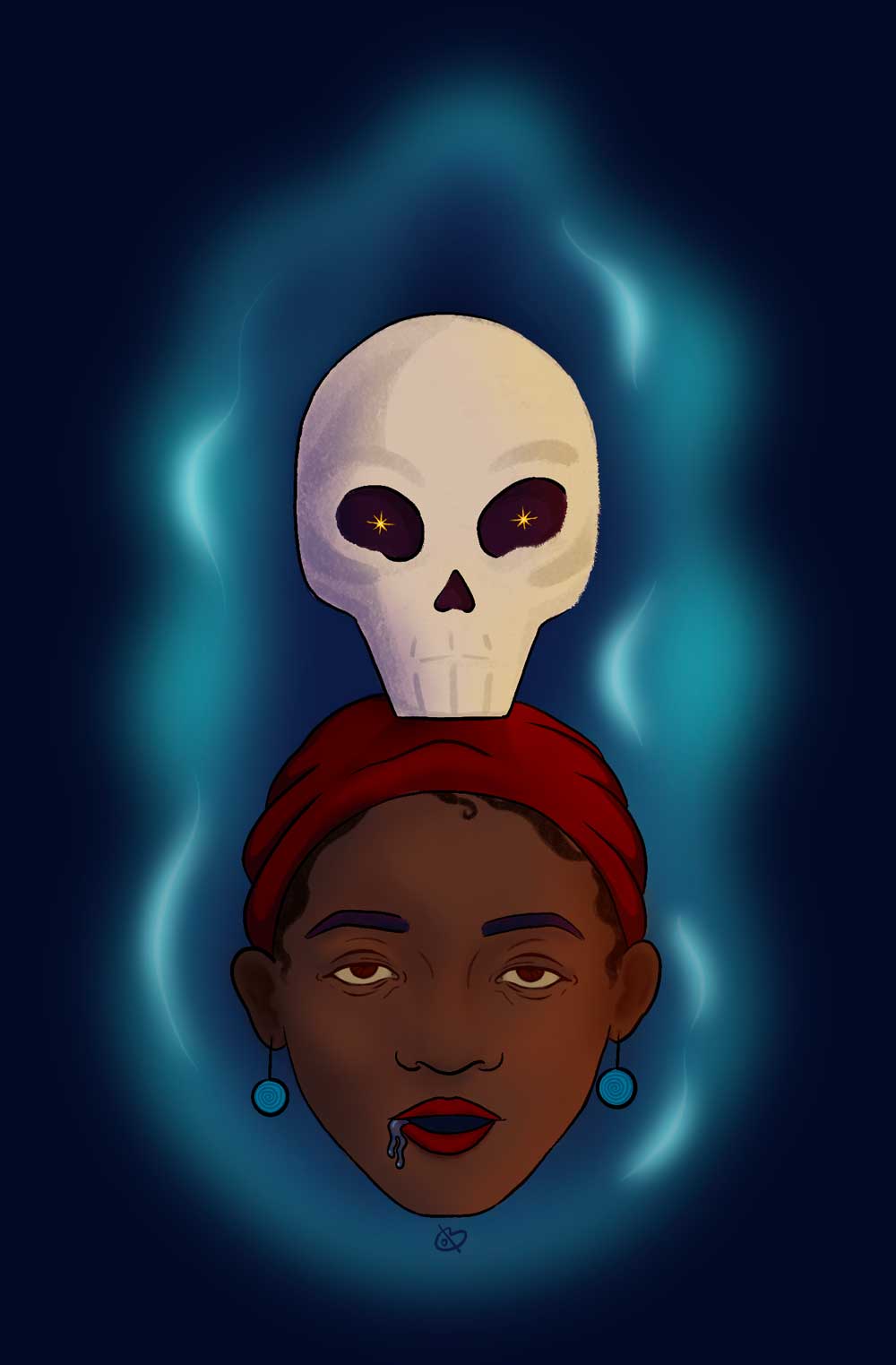
Illustration: Corine Bond
5. Zombies
Zombies may sound like Hollywood’s favorite horror trope, but in Haiti, they’re part of a much deeper story. Since the U.S. marines set foot in Haiti in during the 1915 occupation, the world’s been captivated by tales of Haitian zombies, sparking imaginations and even movie plots. But let’s get one thing straight: Hollywood’s undead have little in common with the real deal in Haitian folklore.
In the heart of Haitian culture, a zombie isn’t just a walking dead. It’s more about the spirit than the flesh. These zombies are living people under the influence of a powerful sorcerer who’s nabbed their spirit, not brain-hungry ghouls rising from graves. The real fear? Not getting munched on by a zombie, but the chilling thought that a sorcerer might snatch your spirit away and enslave you.
So next time you’re watching a zombie flick, remember: In Haiti, zombies are not about the horror of the undead, but the power of the unseen, and the battle for one’s spirit.
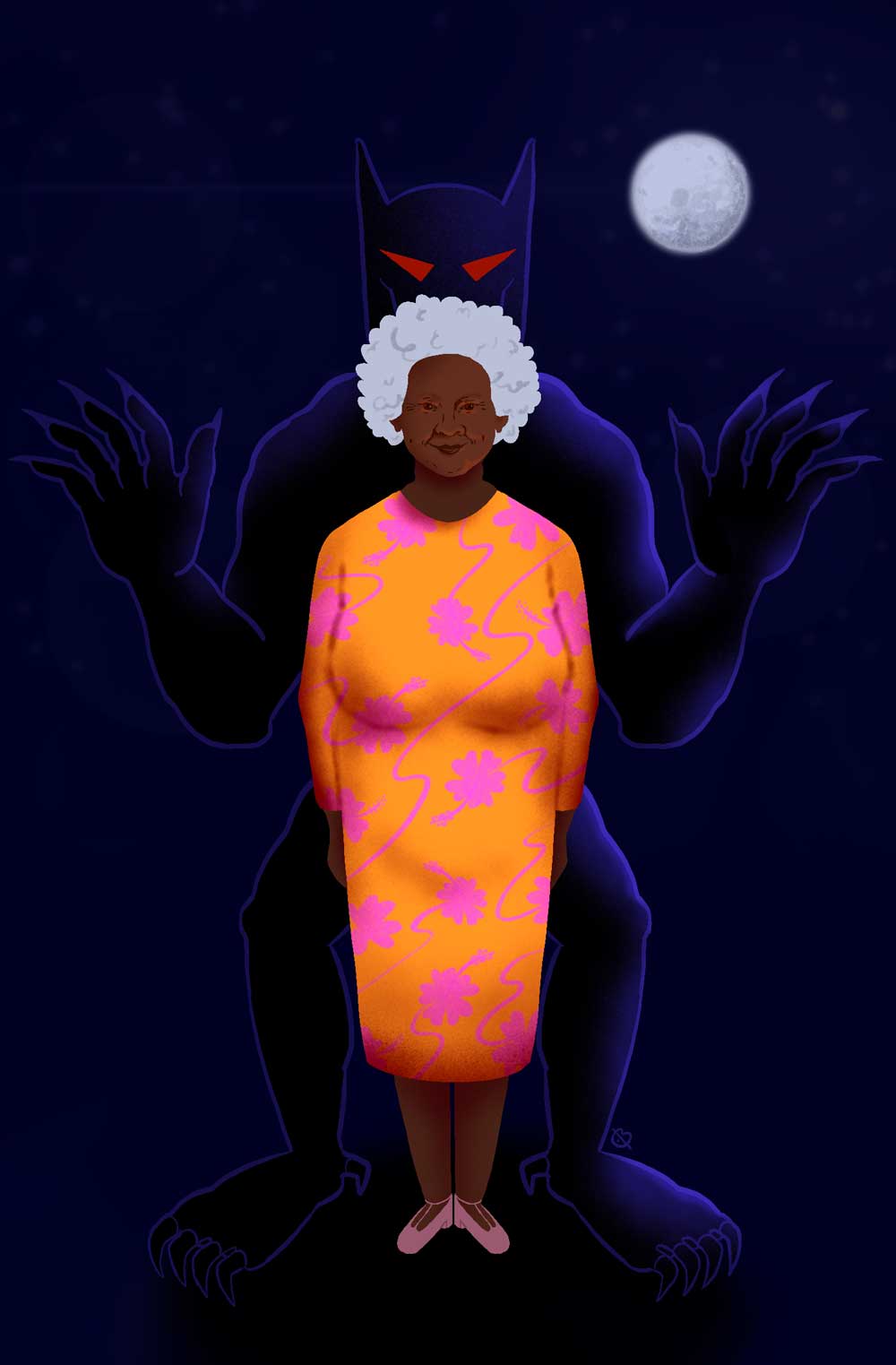
Illustration: Corine Bond
6. Beware of the Lougawou
Ever stumbled upon the term lougawou? Coming from the French expression loup–garou (meaning werewolf) though the Haitian lougawou is not the kind you see in movies, all fangs and fur under the full moon. By day, a lougawou blends in with everyone else, but as night falls, they transform, not into a typical wolf, but into a feathered creature that takes to the skies in search of… well, let’s just say you wouldn’t want to be on their itinerary.
In Haiti, it’s said every neighborhood has its lougawou, often an unsuspecting elderly woman by day. These stories aren’t just to scare kids; they’re a cherished part of Haitian folklore, blending the lines between the real and the mystical.
Now, you might be thinking, ‘How do you keep a flying lougawou at bay?’ Glad you asked! It’s simple – cedar trees. That’s right, planting cedar trees around your yard (or lakou as we say here) is the traditional lougawou repellent. Apparently, they can’t stand the scent.
Additionally, the Haitian cultural tradition of beny chans, a herbal bath believed to offer protection and good luck, is especially used to safeguard kids from being taken by lougawous.
If this article sparked your curiosity and you’d like to dive deeper into the magic of Haitian folklore, here are some recommendations:
- “Tell My Horse” by Zora Neale Hurston offers an enlightening exploration of Haitian spirituality and mysticism, blending first-hand experiences with captivating storytelling. It’s also one of our top picks for understanding Haitian Vodou. Discover more of our favorite books about Haitian Vodou here.
- Haitian Carnival (or kanaval in Kreyol) is an annual celebration deeply rooted in the island’s folklore. From fantastical costumes to legendary characters, it’s a feast for the senses. Meet the colorful characters of Jacmel Carnival in our guide here.
- Are zombies real? Far removed from Hollywood depictions, the mythology of these fascinating yet misunderstood creatures was shaped by deep-rooted beliefs and the trauma of slavery. Read the true story of Haitian zombies here.
- Also, check out Corine B, the talented Haitian artist who created the stunning illustrations for this article. Find her on Instagram here.
Written by Costaguinov Baptiste.
Published December 2024
Top things to see in Haiti

Paradise for your inbox
Your monthly ticket to Haiti awaits! Get first-hand travel tips, the latest news, and inspiring stories delivered straight to your inbox—no spam, just paradise.






